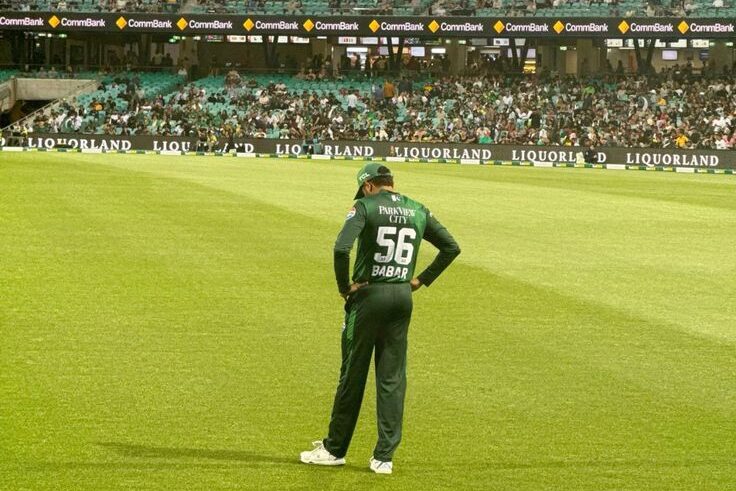Babar Azam has long been considered the cornerstone of Pakistan’s batting lineup. With his elegant strokeplay and classical technique, he drew comparisons with the likes of Virat Kohli, Joe Root, and Kane Williamson. However, recent performances have raised serious questions about the decline in his dominance particularly against spin bowling and under high-pressure situations.
The Spin Struggles: From Confidence to Caution
In his earlier years, Babar Azam was a delight to watch against spin. He regularly stepped down the track, used the depth of the crease wisely, and executed slog sweeps with precision. Who can forget his fearless assault on Adil Rashid and Mitchell Santner during the 2019 World Cup? Videos from that tournament show Babar confidently coming down the pitch, picking lengths early, and sending deliveries sailing into the stands.
But the Babar Azam of today seems hesitant. He appears unsure against googlies and has virtually abandoned the sweep shot. Left-arm spinners, in particular, have found more success against him. The once-assured footwork has given way to static hesitation. This change is not merely technical—it reflects a mental block. He’s no longer imposing himself on the bowler; instead, he appears reactive and under constant pressure.
Pressure, Body Language, and Lack of Luck
Another concern is his visible discomfort under pressure. Unlike his early days, Babar now seems to carry the weight of expectation on his shoulders, and it shows on his face. His body language is often tense, his reactions slow. While pressure is a natural part of elite sports, the real issue is how narrowly Babar is being judged.
Compare him with someone like Virat Kohli—often considered one of the luckiest batsmen in modern cricket. Kohli has benefited from multiple dropped catches, inside edges, and close calls. Babar, on the other hand, rarely receives such fortune. His slightest mistake results in immediate dismissal, making the margins even thinner.

Criticism or Jealousy? Former Cricketers and Their Role
A significant and unfortunate element in Babar’s decline has been the relentless criticism from some former Pakistani cricketers. Whether it’s Shoaib Akhtar calling him “not a brand,” Ahmed Shehzad constantly comparing their careers, or Kamran Akmal questioning his leadership—there seems to be more bitterness than analysis in their comments.
While constructive feedback is essential, repeated negative remarks from these ex-players often feel personal. Shoaib Akhtar’s critique lacks nuance, focusing more on branding than technique. Ahmed Shehzad’s statements often sound like grievances rather than insights, implying favoritism in selection. Kamran Akmal, despite his own checkered international career, spares no opportunity to undermine Babar’s role as a leader.
It’s hard to ignore the possibility of jealousy. Babar’s consistency, elegance, and global recognition stand in stark contrast to the turbulent careers of many of his critics. Instead of mentoring or encouraging the current generation, these voices seem more invested in remaining relevant by dragging him down.
Conclusion: Can Babar Rise Again?
Babar Azam is still young and supremely talented. Every batsman goes through rough patches, and this might be Babar’s turn. The key lies in rediscovering his old confidence against spin, reigniting his intent, and blocking out the noise—whether it’s media pressure or former players seeking attention.
He’s been here before and come out stronger. The question isn’t whether Babar has the skill it’s whether he can silence his doubts, reset his mindset, and evolve into the world-beater he was always destined to be.
And knowing Babar Azam, don’t be surprised if he does exactly that.









